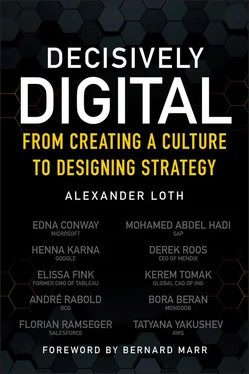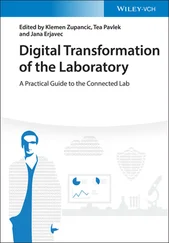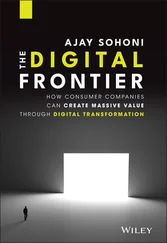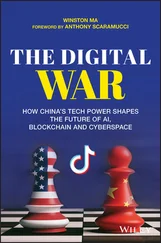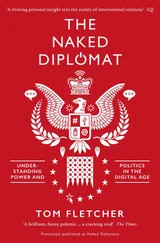The digital strategy needs to identify specific differentiators that can unlock impact beyond the original core competencies and leverage the unique assets. Core competencies can manifest in different ways depending on the industry. Unique assets might be physical assets like retail stores, proximity to customers, or intellectual property. While some of these impacts are specific to core competencies and unique assets, some impacts are more generic and can be triggered by fostering a certain culture. Here are some examples: Attracting new employees, enabled by the collaborative culture Knowledge generation and exchange, enabled by the collaborative culture and the culture of data-driven decision-making Understanding customer behavior, enabled by the culture of data-driven decision-making and the culture of citizen data science Improving products and customer service, enabled by the culture of citizen data science and the maker culture Reducing time to market, enabled by the maker culture There are, of course, also certain impacts that cannot directly map to the culture but are conditioned by a strategic topic directly. Here are some noteworthy examples: Reducing total cost of ownership (TCO), enabled by big data processing and cloud computing Scalability, enabled by big data processing and cloud computing Agility, enabled by process automation, blockchain, and IoT Furthermore, it is possible that impact initiated by a certain culture helps to improve another culture within the organization, for example, by using the insights from remote work data to understand the way the team works (data-driven decision-making) and to modify future tasks and processes for better collaboration (collaborative culture). Digital Capabilities Completing Your Digital Strategy Big Picture Impact Venn Digital Maturity and Organizational Readiness Digital Maturity Assessment Endnotes
5 Part II: Digital Culture and Modern Work Chapter 2: Elissa Fink: How to Charge a Brand with Culture Key Takeaways Endnotes Chapter 3: Patrick Kirchgäßner: Making Invaluable Pools of Information Accessible and Searchable Key Takeaways Chapter 4: Edna Conway: Protecting the Modern Workplace from Cyber Threats and Compliance Risks Key Takeaways Endnotes Chapter 5: Florian Ramseger: The Future of the Digital Society Key Takeaways Endnotes Chapter 6: Corporate Social Network to Drive Collaborative Culture as Key Enabler for Modern Work Best-of-Breed vs. Best-of-Suite Corporate Social Network Following the Collaboration Framework Driving Adoption Key Takeaways Endnotes
6 Part III: Data Democracy and Analytics Chapter 7: Yilian Villanueva Martinez: Visual Analytics as Strategic Asset Key Takeaways Chapter 8: Jordan Morrow: Bringing Data Literacy to the World Key Takeaways Chapter 9: Lee Feinberg: Turn Data Visualization and Data Literacy into Strategic Functions Key Takeaways Endnote Chapter 10: Sarah Burnett: Fostering a Data-Driven Culture at a Large Global Financial Organization Key Takeaways
7 Part IV: Big Data Processing and Cloud Computing Chapter 11: Mark Kromer: Leveraging Big Data Analytics and Cloud Platforms for the Next-Generation Data Strategy Key Takeaways Chapter 12: Dr. Henna A. Karna: Racing to Last Place —The Criticality of an End-to-End Data Strategy Key Takeaways Chapter 13: Mohamed Abdel Hadi: The Future of Data-Driven Business Key Takeaways Endnote Chapter 14: Tatyana Yakushev: Data Visualizations and Cloud-Powered AI as Strategic Assets for Next-Gen Analytics Key Takeaways Endnotes Chapter 15: Kerem Tomak: Designing a Digital Strategy for the Financial Sector Key Takeaways Endnotes Chapter 16: Christy Marble: Connecting the Dots Across the Customer Lifecycle Key Takeaways Endnotes Chapter 17: Data Strategy as an Essential Component of the Digital Transformation Journey Three Elements of a Data Strategy Big Data Analytics Decision-Support Tools Result Chief Digital Officer as Key Driver of the Data Strategy Key Takeaways Endnotes
8 Part V: Artificial Intelligence Chapter 18: Bora Beran: Vast Amounts of Data Are Key for AI and Automation Key Takeaways Endnotes Chapter 19: Andreas Kopp: Responsible AI in Practice Key Takeaways Endnotes Chapter 20: Cameron Turner: Understanding the Future with Explainable AI Key Takeaways Chapter 21: Patrick Glauner: Everyone Needs to Acquire Some Understanding of What AI Is Key Takeaways Endnotes Chapter 22: Vladimir Alexeev: Natural Language Processing and the Human Factory Empathy Key Takeaways Endnotes
9 Part VI: Process Automation, Blockchain, and the Internet of Things (IoT) Chapter 23: Derek Roos: Fully Leveraging Your Human Capital Key Takeaways Chapter 24: André Rabold: How Digital Culture and IoT Disrupt Our Future Key Takeaways Endnote Chapter 25: Ian Choo: The Distributed Ledger Revolution Key Takeaways Endnote Chapter 26: Sofie Blakstad: Blockchain as a Critical Enabler Toward the Ecosystem Economy Key Takeaways Endnotes Chapter 27: Sven Sommerfeld: Robotic Process Automation (RPA) and Hyper Automation Transform Today's Business Key Takeaways Endnote
10 Appendix: Reciprocity: Answering Some of My Own Questions In 10 Years, What Do I Think Our Work Will Look Like? What Are My Favorite Apps, Tools, or Software That I Can't Live Without? Do I Have a Smart Productivity Hack or Work-Related Shortcut? What Is the Best Advice I Have Ever Received? Key Takeaways Endnotes
11 Index
12 Copyright
13 Dedication
14 About the Author
15 Acknowledgments
16 Foreword by Bernard Marr
17 End User License Agreement
1 Chapter 21Table 21.1 Relative Time Needed in an Industrial AI Project
1 Chapter 1 Figure 1.1 Strategic topics and culture Figure 1.2 Digital strategy big picture Figure 1.3 Impact Venn Figure 1.4 Graph showing digital maturity and organizational readiness by st... Figure 1.5 A digital maturity assessment
2 Chapter 5 Figure 5.1 The three stages of the digital transformation
3 Chapter 6 Figure 6.1 Example of a collaboration framework based on Microsoft 365 produ...
4 Chapter 12Figure 12.1 Principles of yesterday versus orientation of tomorrowSource: Dr...Figure 12.2 Diverse and inclusive thinking is a crucial component for a conn...
5 Chapter 13Figure 13.1 SAP Data Warehouse Cloud
6 Chapter 16Figure 16.1 Customer life cycleFigure 16.2 Core metrics for digital growth marketing programs
7 Chapter 17Figure 17.1 Three elements of a data strategy adapted for the telco's typica...
8 Chapter 19Figure 19.1 Microsoft’s responsible AI principlesFigure 19.2 Uncovering relevant areas to explain an image captioning modelFigure 19.3 Fairness-accuracy trade-offFigure 19.4 Secure multiparty machine learningFigure 19.5 Differential privacy
9 Chapter 21Figure 21.1 NVIDIA Jetbot
10 Chapter 27Figure 27.1 Effort of implementation and value to the company
1 Cover Page
2 Table of Contents
3 Begin Reading
1 i
2 xiii
3 xiv
4 xv
5 1
6 3
7 4
8 5
9 6
10 7
11 8
12 9
13 10
14 11
15 12
16 13
17 14
18 15
19 16
20 17
21 19
22 21
23 22
24 23
25 24
26 25
27 26
28 27
29 28
30 29
31 30
32 31
33 32
34 33
35 34
36 35
37 36
38 37
39 38
40 39
41 40
42 41
43 42
44 43
45 44
46 45
47 46
48 47
49 48
50 49
51 50
52 51
53 52
54 53
55 54
56 55
57 56
58 57
59 58
60 59
61 60
62 61
63 62
64 63
65 64
66 65
67 66
68 67
69 68
70 69
71 70
Читать дальше
